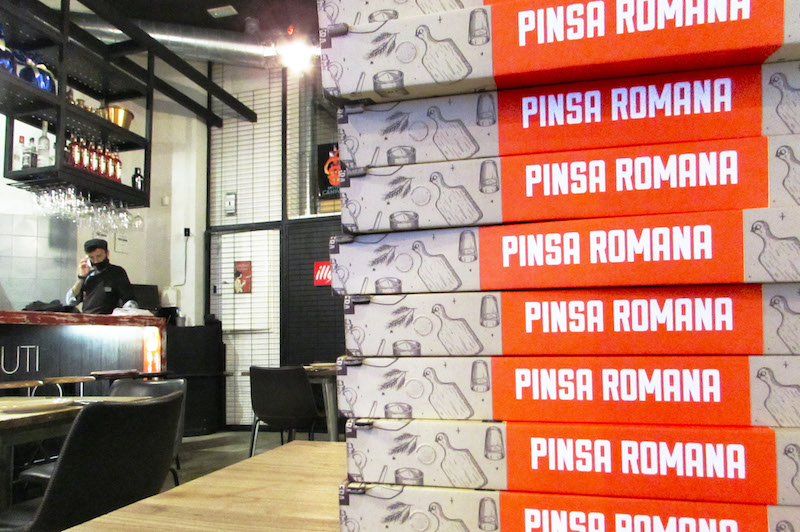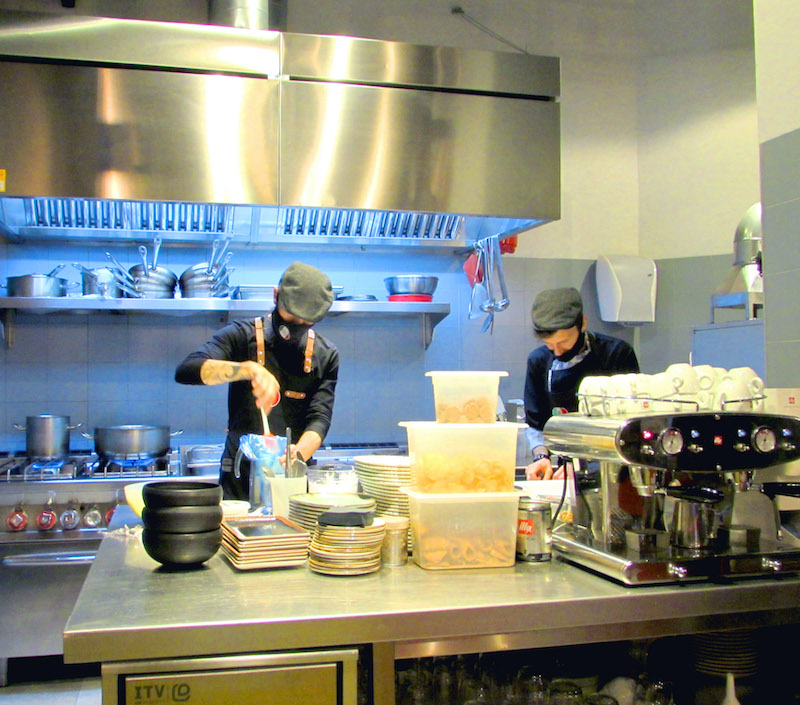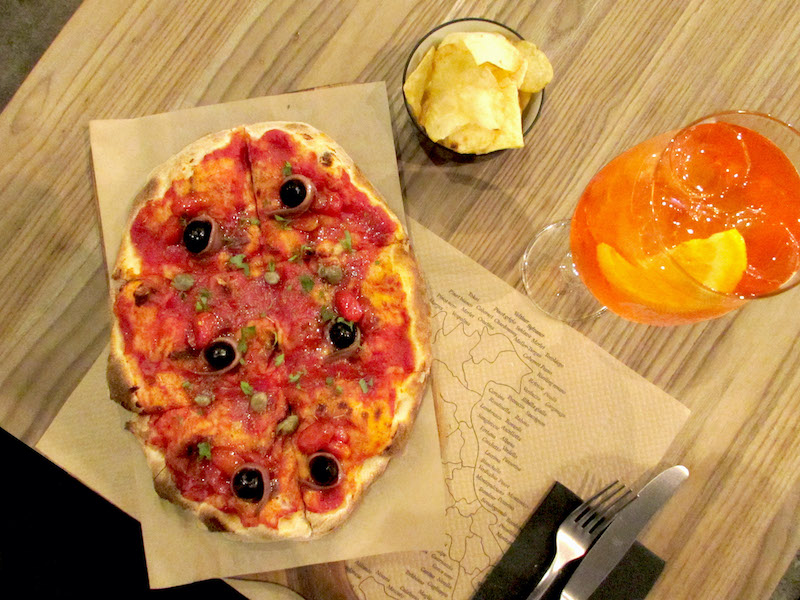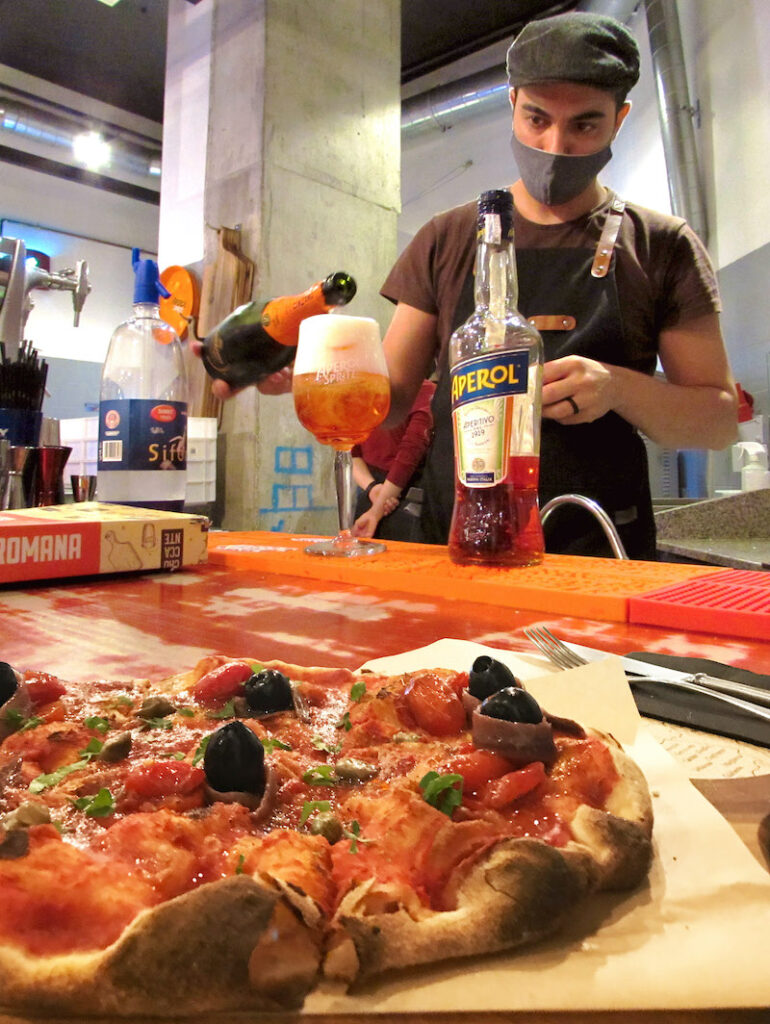Shooloongkan: Madrid’s most authentic Chinese restaurant and hot pot experience
Finding Chinese food in Madrid is easy, but finding authentic Chinese food requires some work. It’s normal for flavors to be subdued and menus to be adapted in order to please the local taste palate, but sometimes you just want to order the real deal. And even though inauthentic doesn’t necessarily translate to a bad meal—just because they don’t eat chow mein in China doesn’t make it less delicious—there is a glorified quality about eating a meal as it’s prepared in its home culture.
In the case of hot pot, that home culture is Sichuan province in southwest China. A quick Google search for “hot pot Madrid” brings up plenty of options to choose from, but if authenticity is what you’re after, Xiaolongkan (sometimes spelled ShooLoongKan) in Legazpi has a leg up on the others: the restaurant actually comes from Sichuan.
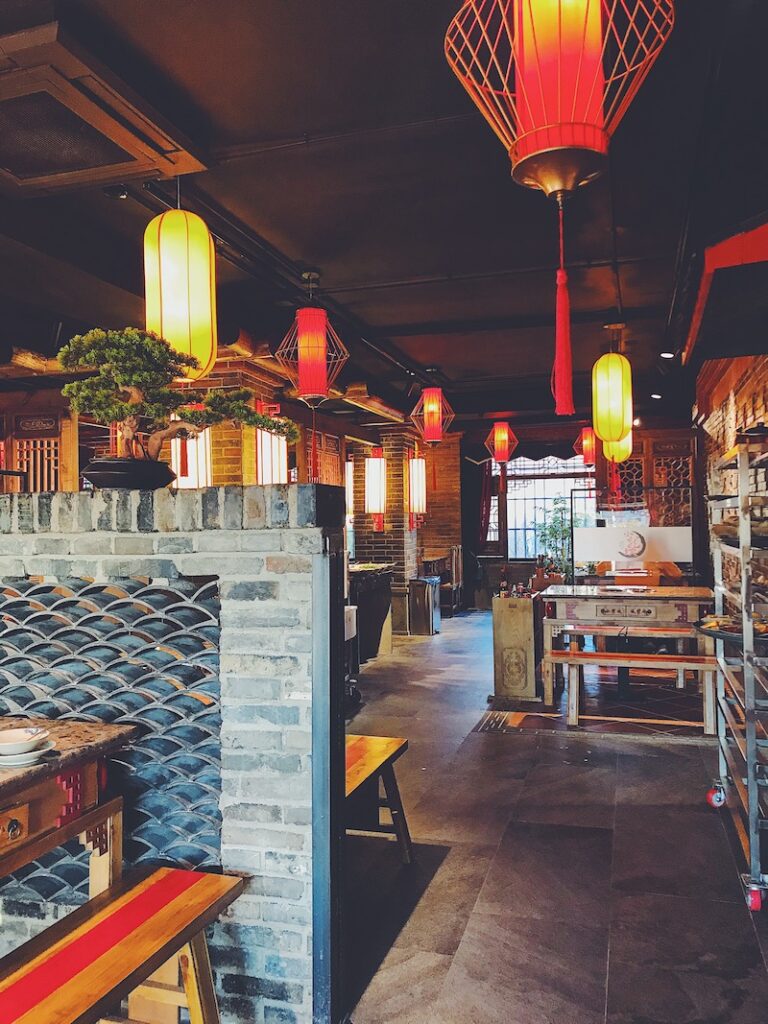
“This is one of the only real Chinese restaurants in Madrid,” proclaims Ella, one of the restaurant’s managers. “Everything you see inside here came directly from China,” she says, pointing to the stone tables, the paper lanterns, the bamboo dividers.
Xiaolongkan is a franchise that has roots in Chengdu, the capital city of Sichuan. The Legazpi location opened in August 2020 in the middle of the pandemic and is the company’s debut in Spain. Just a stone’s throw away from Madrid’s Chinatown in Usera, the entire meal—from the ornate decor to the complimentary orange slices after eating—is designed to perfectly replicate an experience of eating hot pot in China.
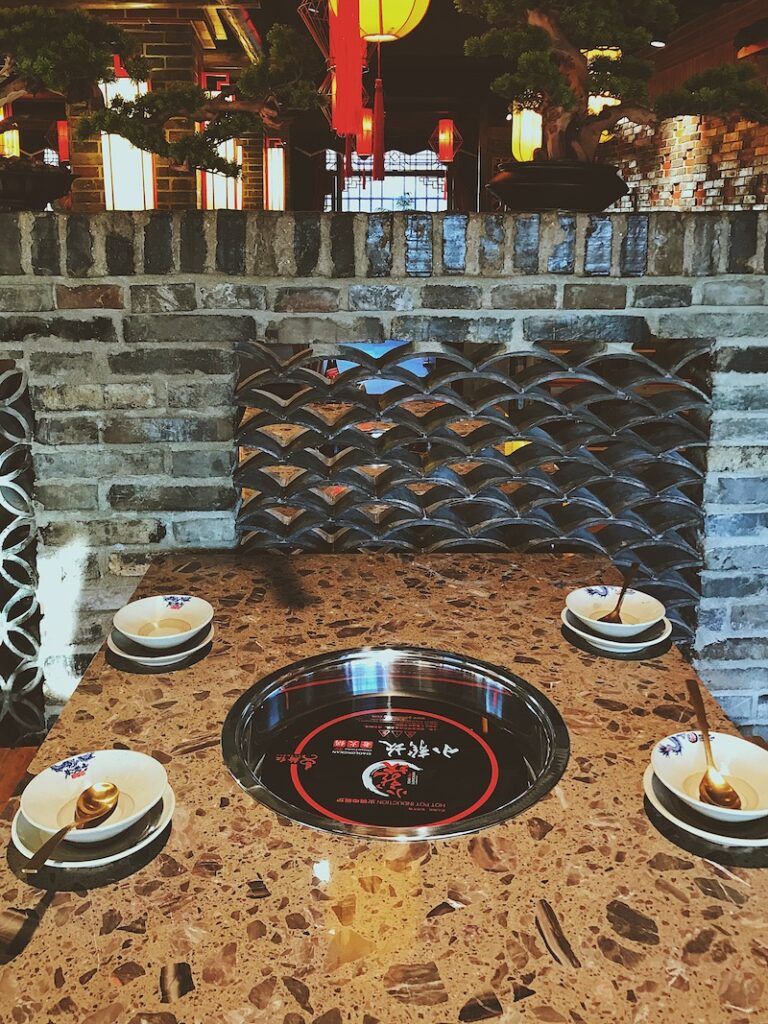
One of the biggest obstacles to trying a new cuisine is the fear of not knowing what to do and committing some type of faux pas. And while there is no way to stop that from happening—you just have to graciously accept it—there are a few tips to keep in mind if you’ve never had hot pot so you don’t feel completely clueless.
1. Hot pot is a type of fondue, not a soup.
When you sit down with your placemat-sized paper menu, it’s hard not to feel immediately overwhelmed by the number of options, especially if you’re unsure of what hot pot is. You’ll choose the type of broth and then an assortment of raw meats and vegetables, which are cooked by being dipped or bathed in the boiling liquid. You’ll remove the cooked items, dip them in your sauce, and eat them, but you generally don’t drink the broth, as with soup.
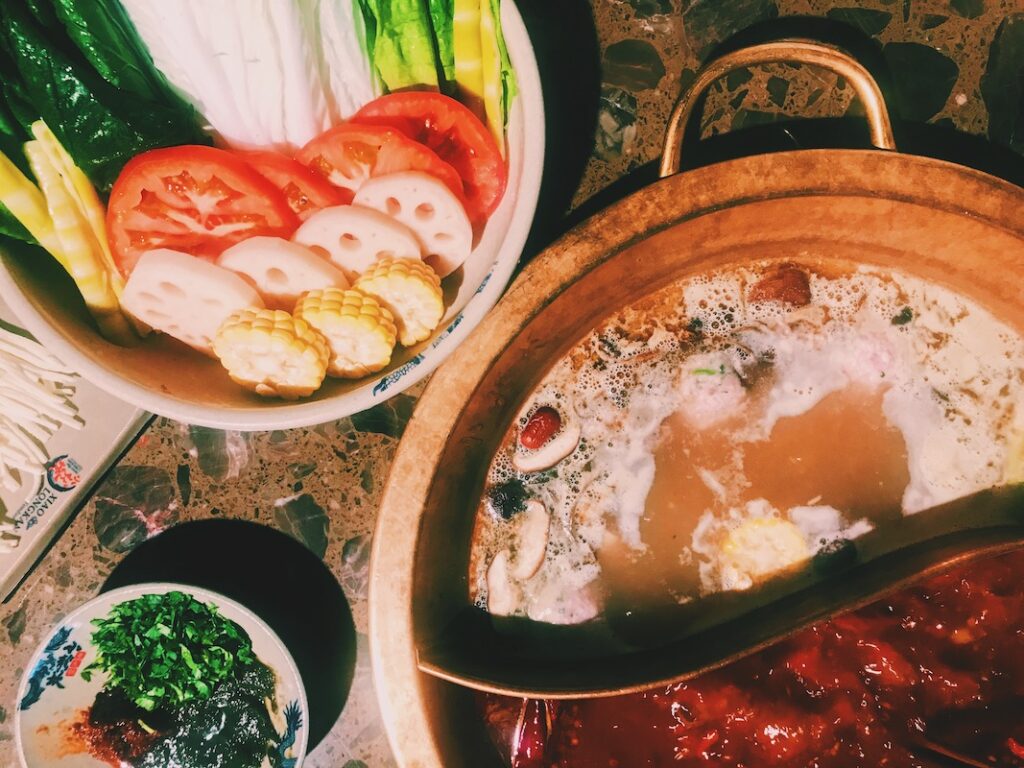
2. Don’t be overeager with your level of spiciness.
The three broth options at Xiaolongkan are the traditional Sichuan chili broth, a mushroom broth, and a tomato broth. Only the Sichuan chili broth is spicy and you can choose the level of spice, from one chili pepper to three chili peppers. If you are clearly unfamiliar with the menu, the server will politely but assertively recommend you choose the one chili pepper option, and you should follow their advice.
Remember, this is a menu that was designed in Sichuan for Sichuanese tastes. If you want to add more spice later, you always can. You can also have multiple broths at your table if you want to try more than one.
3. Explore options outside of your comfort zone for your dipping items.
If you’ve ever been curious about eating innards, this is the place to try them. After all, hot pot is all about playing with texture, since everything ends up tasting like your broth and dipping sauce. Many of the “recommended” menu items are visceral—thinly-sliced kidneys, blood sausage, duck gizzards—but only because they’re crowd pleasers. If you have the stomach for it, give at least one of them a try.
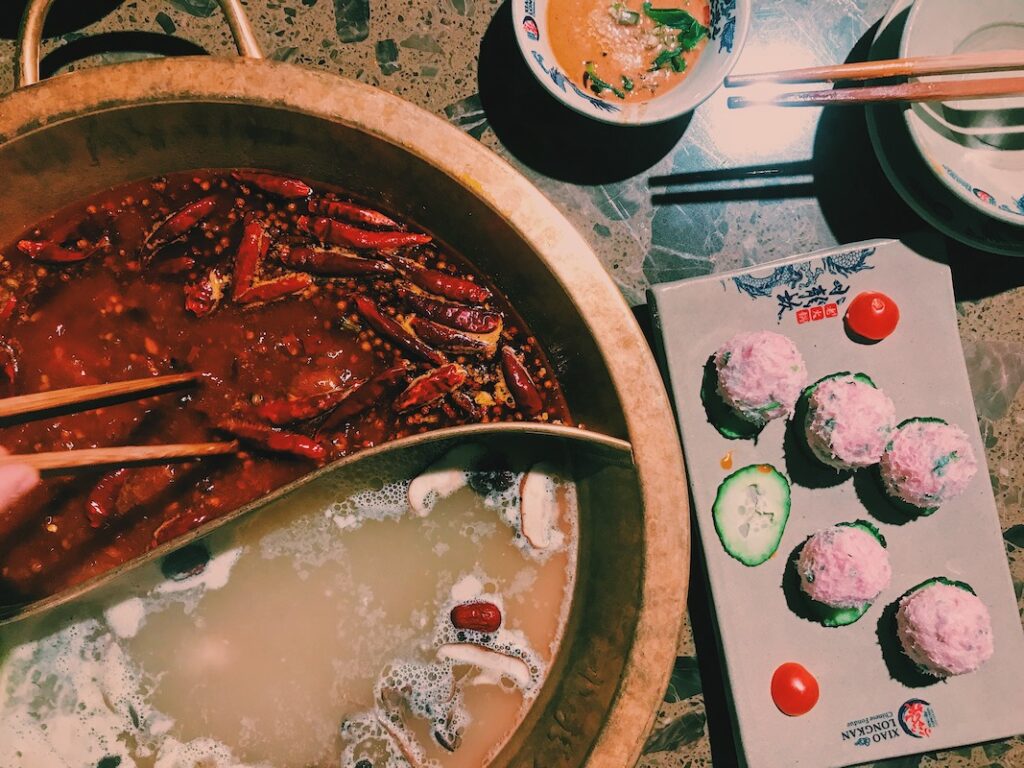
4. Order your veggies à la carte.
The mixed plate of vegetables may look appetizing, but it includes an unnecessary amount of romaine lettuce. Don’t skip your vegetables, just handpick the ones you most want to eat. And while an assortment of vegetables may sound ideal for non-meat eaters, none of the broths are vegetarian.
5. The sesame dipping sauce will be your best friend.
After a big pitcher of water, that is. The bowl of Chinese sesame paste you’re given when you sit down is to dip your cooked items after pulling them from the chili broth, so the sweetness of the sesame paste can mellow out the intensity of the chilis. You can keep the sesame sauce as is or add to it from the buffet-style condiment bar with items like fresh cilantro leaves, chopped scallions, oyster sauce, different vinegars, or even more chili oil if you’re feeling particularly intrepid.
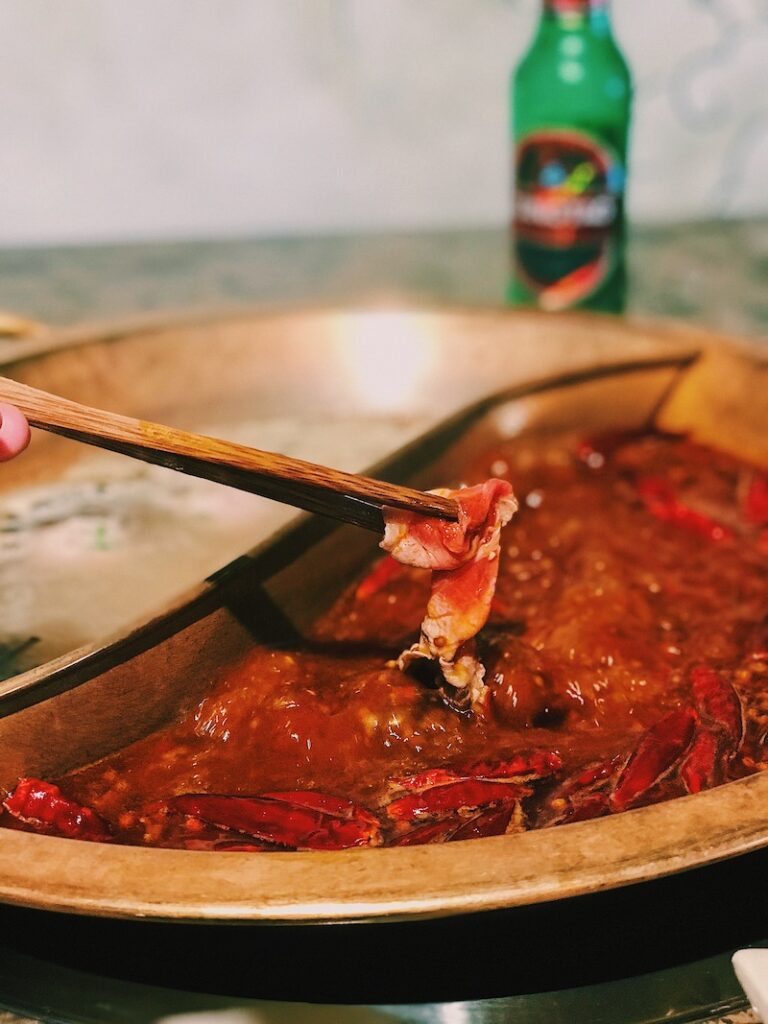
Final thoughts on Shooloongkan (a.k.a. Xiaolongkan)
At Xiaolongkan, the ritual of preparing the food is just as enjoyable as actually eating it. There’s a carnal satisfaction that comes from gliding a thinly sliced piece of Wagyu beef over the surface of the bubbling broth, watching as it literally cooks before your eyes.
And the highlight of your meal may very well be finding that meatball or mushroom that you had lost in the pot and completely forgotten about—until you unsuspectingly fish it back out 20 minutes later, imbued with the maximum amount of flavor it can possibly hold. Imagine the feeling when you find a five euro bill in your pocket, and the sensation is similar.
After a year that’s been all about social distancing, there’s something refreshing about a meal that’s so brazenly communal. Hot pot is unavoidably served family-style, where everyone at the table flavors the same broth by dipping their food (there’s a temperature check for everyone who enters and the boiling liquid is a natural disinfectant, so use the same precautions you would when visiting any restaurant). It’s fun and sociable and authentic, but, above all, it’s tasty.
Hot pot at Xiaolongkan checks all the boxes, just as long as you can withstand the heat.
Shooloongkan info
- IG: Shooloongkan
- Address: Calle Maestro Arbos 3
- Metro: Legazpi
- Reservations recommended
